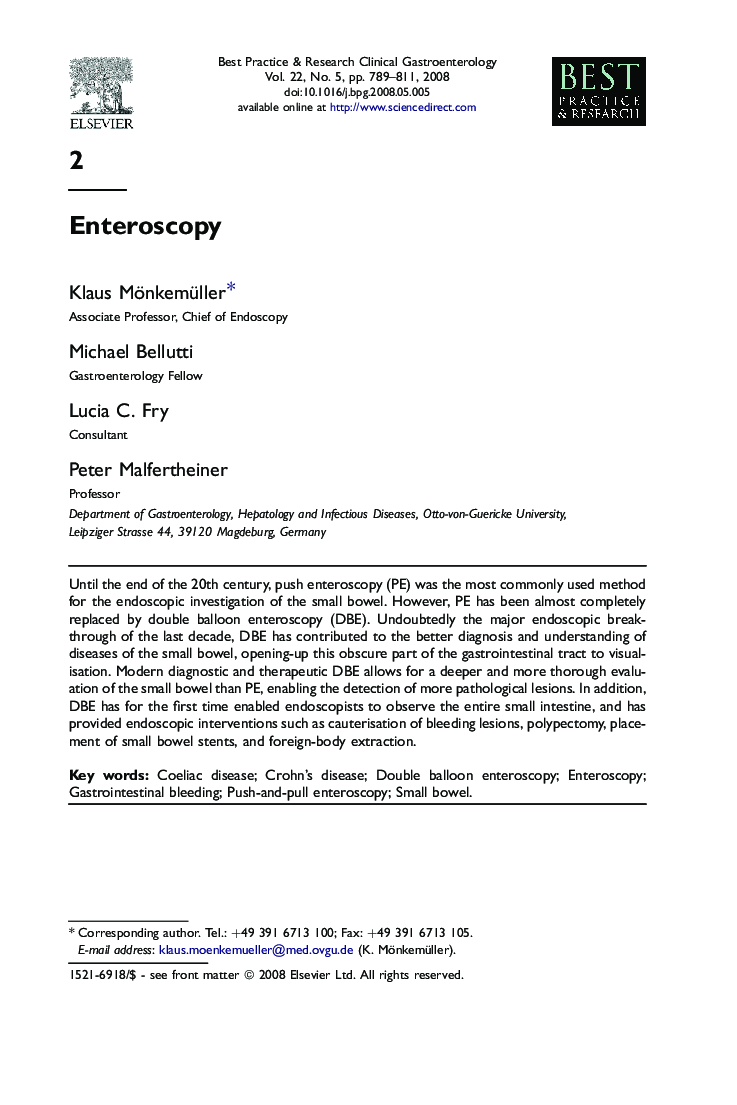| Article ID | Journal | Published Year | Pages | File Type |
|---|---|---|---|---|
| 3254585 | Best Practice & Research Clinical Gastroenterology | 2008 | 23 Pages |
Until the end of the 20th century, push enteroscopy (PE) was the most commonly used method for the endoscopic investigation of the small bowel. However, PE has been almost completely replaced by double balloon enteroscopy (DBE). Undoubtedly the major endoscopic breakthrough of the last decade, DBE has contributed to the better diagnosis and understanding of diseases of the small bowel, opening-up this obscure part of the gastrointestinal tract to visualisation. Modern diagnostic and therapeutic DBE allows for a deeper and more thorough evaluation of the small bowel than PE, enabling the detection of more pathological lesions. In addition, DBE has for the first time enabled endoscopists to observe the entire small intestine, and has provided endoscopic interventions such as cauterisation of bleeding lesions, polypectomy, placement of small bowel stents, and foreign-body extraction.
